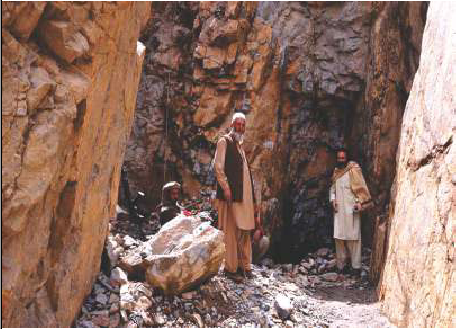National Mineral Policy of Pakistan
 Author: STC
Author: STC
Article Date: 01.04.2016
Pakistan is blessed with enormous wealth of mineral resources but it has not been able to commercially exploit most of its reserves optimally, due to a variety of constraints, such as that of infrastructure, technology, skilled workforce and financial resources. The sector has been accorded the lowest priority of the government as the National Mineral Policy 2013 has neither been implemented by the present government nor a revised policy has been announced so far to meet the changing investment dynamics.
In November 2014, the government has simply recapitulated the National Mineral Policy 2013, though without adopting special measures for its development, but with consensus of all provinces and approval of Council of Common Interests (CCI), since constitutionally all minerals, except nuclear substances, are provincial subjects.
The government has not even formed a Mineral Investment Board envisaged in the policy as a consultative forum headed by the prime minister. The first-ever National Mineral Policy was introduced in 1995, but it failed to achieve its objectives to exploit marble sector at a large scale, to attract foreign investment and joint ventures, to introduce modern technologies for mining and processing and to promote marketing expertise. The result was that marble's contribution to GDP remained static during the last two decades.
The worldwide demand for dimensional stones, or decorative and building stones, such as marble, granite, onyx, sandstone, limestone, etc is on the rise as the construction industry grows exponentially.
Current world production and consumption of dimensional stones is about 150 million tonnes gross, with an estimated production value of $40 billion. In 2014, dimensional stones recorded world trade of 86 million tonnes at $22.8 billion, whereas the balance quantities were consumed domestically. There are 12 major countries producing dimensional stones, though reserves are found in other countries too. These include, among others, China, US, Italy, Turkey, India and Brazil, while US remains the world's leading market for dimensional stones.
On the other hand, huge and long-term potential for export of these construction stones exists, and export volume to our trade countries can be increased, besides finding new markets. Interestingly, granite is gaining popularity - domestically, regionally as well as internationally, compared to marble.
Use of granite is preferred due to its uniform texture, hardness and ability to withstand weather effects. It is more durable and economical in maintenance as it does not require polishing after installing. There are large deposits of granite in Pakistan but have not been specifically investigated countrywide. However, it is estimated at over two billion tonnes, with proven reserves of 4,140 million tonnes. In contrast, average annual production is currently limited to 5,000 tonnes only.
Availability of large and high quality granite reserves, coupled with its growing demand in the export market make this sub-sector very attractive for investment. Instead of exporting low-value rough and crude granite, value-added finished products and highly processed granite like polished, honed and antique-polished should be focused on.
Likewise, handling, transport, storing, cutting, sizing, finishing and polishing operations are far from satisfactory. Mostly, locally manufactured processing machinery is being employed in hundreds of units.
Concerted efforts are therefore needed by the government to create conducive environment for investment, technological up-gradation of the quarrying process and related industrial units on the fast track.